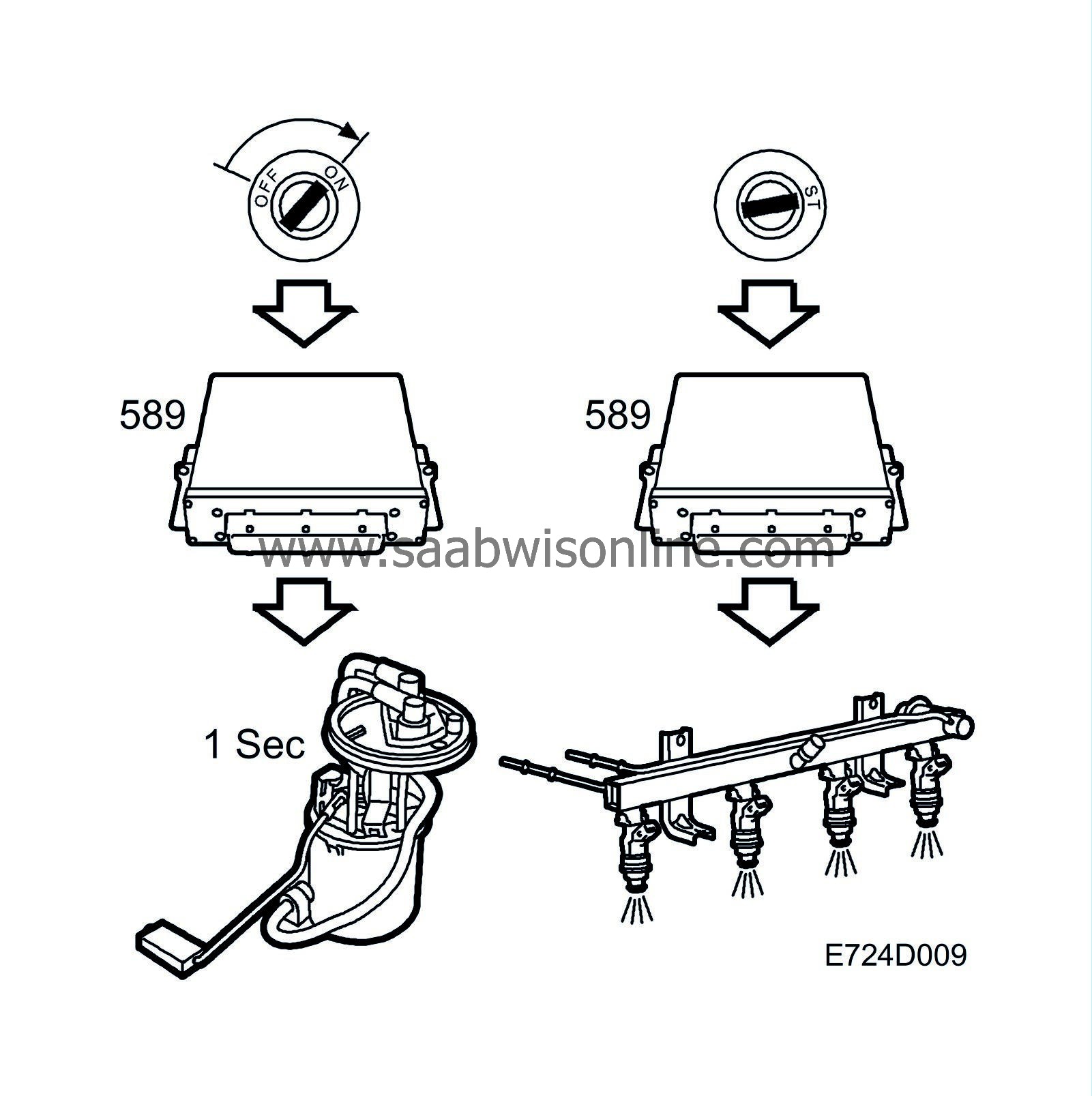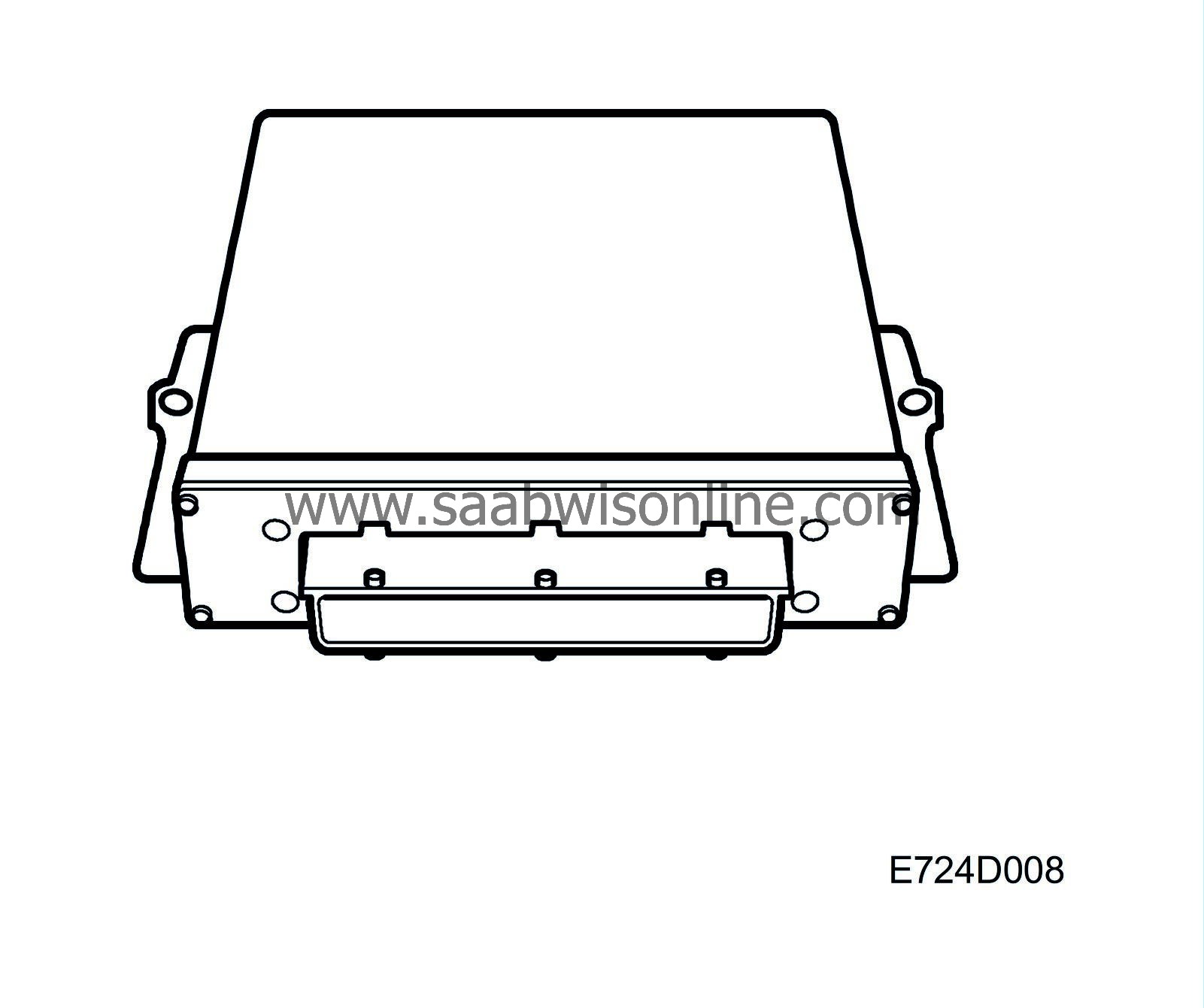Control module
| Control module |
| • |
engine torque
|
|
| • |
fuel injection
|
|
| • |
ignition.
|
|
The control module for the Trionic T7 has a 70-pin connector and is placed in the engine bay in front of the windscreen on the passenger side.
The control module has two processors and receives information from a number of sensors. It processes this information using matrices which are stored in its memory after optimization of engine functions. These important matrices include ignition timing matrices, fuel matrices and air mass matrices.
The control module can be damaged by electrostatic discharges or the short-circuiting of any of its outputs. Great care must therefore be taken when handling the control module, such as when carrying out fault diagnosis with a BOB.
The control module is continuously supplied with current from the +30 circuit and loses adapted values and stored diagnostic trouble codes if this current disappears.
The control module is designed to operate on a voltage of between 8 and 16 V when the car is being driven.
When the ignition is switched on, the control module is activated and lights the CHECK ENGINE lamp continuously as a function test. The fuel pump relay is activated for 1 second to build up the fuel pressure and the control module then waits for pulses from the crankshaft position sensor.
Fuel injection is controlled mainly by means of the mass air flow sensor.
Substitute functions are provided for all sensors except the crankshaft position sensor.
An absolute pressure sensor is integrated in the control module to measure the atmospheric pressure.
Atmospheric pressure is used to:

| • |
Correct the PWM ratio of the charge air control valve. At low atmospheric pressure, a greater PWM ratio is required to obtain the same air mass/combustion.
|
|
| • |
Correct the purge PWM ratio. At low atmospheric pressure, a higher PWM ratio is required to achieve the same purge flow.
|
|
| • |
Protect the turbo from overrevving at low atmospheric pressure by limiting the maximum permitted air mass per combustion.
|
|
| • |
Block the OBD II diagnostics at pressures lower than 78 kPa.
|
|
Once the ignition has been turned off, all the sensors that are supplied with 5 V are activated for 15 minutes. After 15 minutes, only the memory is active. The memory stores the adapted values.
Adaptation is important for performance, drivability, fuel consumption and emission control. The control module should therefore not be removed nor should its power supply be disconnected unnecessarily.
| Diagnostics |
| • |
If the control module's ROM program memory or RAM working memory is faulty, diagnostic trouble code P0605 will be generated.
|
|
| • |
If any internal function which affects throttle control is faulty, diagnostic trouble codes P1601-P1611, P1613-P1614 or P1621 will be generated.
|
|
| • |
If the atmospheric pressure sensor is faulty, diagnostic trouble codes P1631-P1633 will be generated. The charge air pressure's starting value is used as a substitute value and purging is blocked.
|
|



